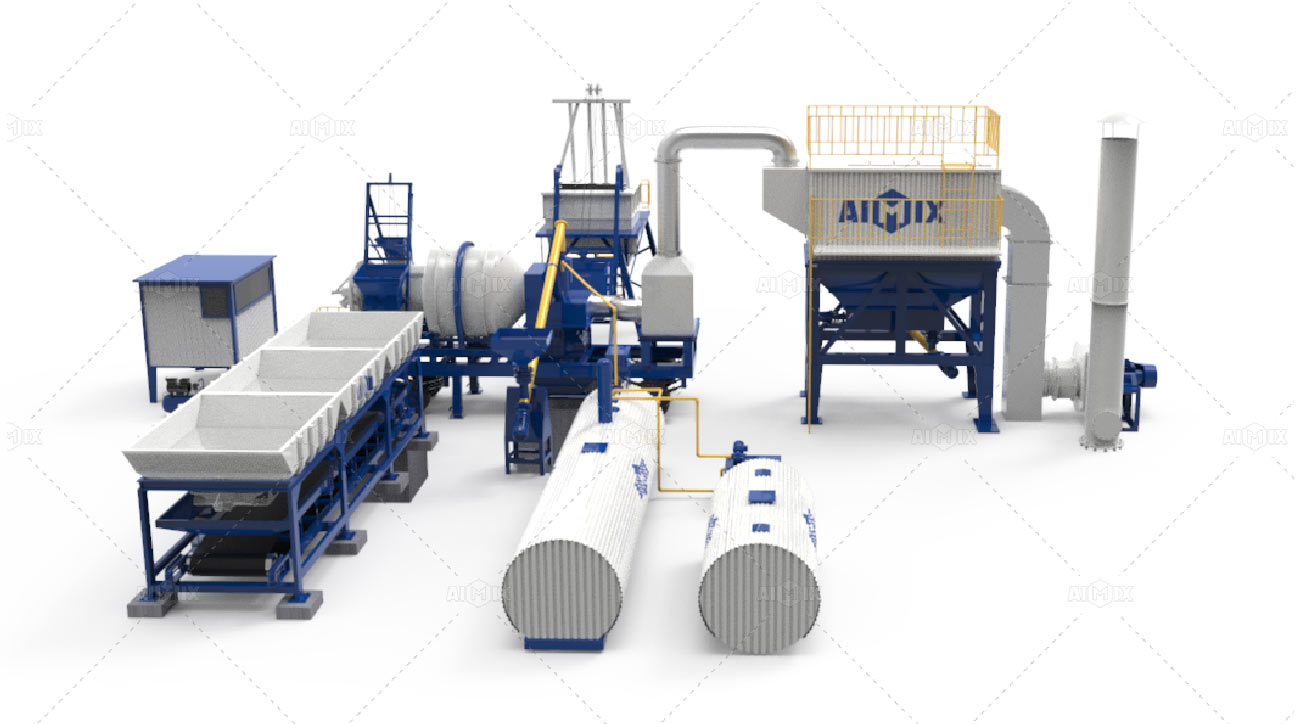When it comes to asphalt production, choosing the right type of asphalt plant is crucial for efficiency, cost-effectiveness, and the quality of the final product. The two most common types of asphalt plants used in the industry are batch asphalt plants and continuous asphalt plants. While both types serve the same purpose, their methods of production, advantages, and applications differ significantly. In this article, we’ll break down the differences between these two types of asphalt plants and help you determine which one is best for your needs.
Overview of Asphalt Plants
An asphalt plant is a facility used to produce asphalt, a mixture of aggregates, binder (usually bitumen), and fillers. Asphalt is used primarily in the construction of roads, highways, and other infrastructure. Asphalt plants(Planta pavimentos) are equipped with systems to mix and produce the asphalt in various grades, which can be tailored to meet specific requirements for different projects.
Key Components of an Asphalt Plant
- Dryer Drum: Used to dry aggregates before mixing with bitumen.
- Mixing Unit: Where the aggregates and bitumen are combined to produce asphalt.
- Cold Feed System: Stores the raw materials like aggregates before they are heated.
- Control System: Regulates the mixing process, temperature, and other key aspects of production.
Now, let’s dive deeper into the two main types of asphalt plants: batch asphalt plants and continuous asphalt plants.
Batch Asphalt Plants: Precision and Flexibility
A batch asphalt plant produces asphalt in discrete batches. It combines the ingredients in controlled cycles, allowing for precise control over the amount and quality of each ingredient in the mix. Batch plants are often used for projects that require high precision or different grades of asphalt.
How Batch Asphalt Plants Work
In a batch asphalt plant, the process follows these basic steps:
- Weighing: Aggregates and bitumen are weighed separately.
- Drying: The aggregates are then dried in a rotary drum dryer.
- Mixing: The heated aggregates are mixed with bitumen and other additives in a mixing unit.
- Discharge: The finished asphalt is discharged into trucks or storage silos.
Advantages of Batch Asphalt Plants
- High-Quality Control: Batch plants provide precise control over the proportions of materials in each batch, ensuring high-quality asphalt.
- Flexibility: Ideal for small to medium-sized projects or those requiring different asphalt grades.
- Customization: Batches can be tailored to meet specific project requirements.
Disadvantages of Batch Asphalt Plants
- Lower Production Rate: Since each batch is produced separately, batch plants generally have a slower production rate compared to continuous plants.
- More Labor-Intensive: The cyclical nature of production requires more manual intervention and attention.
- Higher Operating Costs: Due to the controlled processes and potential for slower output, operating costs may be higher.
Continuous Asphalt Plants: Efficiency and High Output
A continuous asphalt plant operates differently by continuously feeding materials into the plant and mixing them without stopping. This type of plant is often chosen for larger-scale projects that require high-volume asphalt production with consistent quality.
How Continuous Asphalt Plants Work
The process in a continuous asphalt plant(planta de asfalto continua) is streamlined and uninterrupted:- Feeding: Aggregates and bitumen are continuously fed into the plant.
- Mixing: The materials are mixed together in a continuous flow process, where they are combined without any interruption.
- Discharge: The final asphalt mixture is continuously discharged into trucks or storage silos as it is produced.
Advantages of Continuous Asphalt Plants
- High Production Capacity: Continuous plants can produce large volumes of asphalt with minimal downtime, making them ideal for large-scale projects.
- Lower Operating Costs: With continuous operation, these plants generally require less labor and can run for longer periods without interruptions, reducing overall costs.
- Efficiency: The continuous process is more energy-efficient, as the plant doesn’t have to wait for the next batch to start producing.
Disadvantages of Continuous Asphalt Plants
- Less Flexibility: Unlike batch plants, continuous plants are less flexible when it comes to producing different asphalt grades or mixing adjustments.
- Higher Initial Investment: Continuous asphalt plants tend to have a higher upfront cost, making them less suitable for small or short-term projects.
- Quality Control: While the production is efficient, it can sometimes be more difficult to make precise adjustments to the mix as compared to batch plants.
Which Asphalt Plant Is Right for Your Project?
Choosing between a batch asphalt plant and a continuous asphalt plant depends on the nature of your project, production needs, and budget.
Consider a Batch Asphalt Plant If:
- You need to produce different types of asphalt for a variety of projects.
- High precision in the mixing process is required.
- You are working on smaller or medium-sized projects that don’t require high-volume production.
Consider a Continuous Asphalt Plant If:
- Your project requires high-volume asphalt production.
- Consistency and efficiency are essential.
- You are working on large-scale, long-term projects where production speed and cost-effectiveness are top priorities.
Conclusion
Both batch asphalt plants and continuous asphalt plants have their place in the industry, with each offering unique advantages depending on the specific needs of the project. Batch asphalt plants are ideal for projects requiring flexibility and high-quality control, while continuous asphalt plants excel in large-scale projects requiring efficiency and high production capacity. By understanding the differences between these two types of asphalt plants, you can make a more informed decision that aligns with your business goals and project requirements.


Comments
No comments yet. Be the first to react!